Studland Bay
Wednesday 9 July
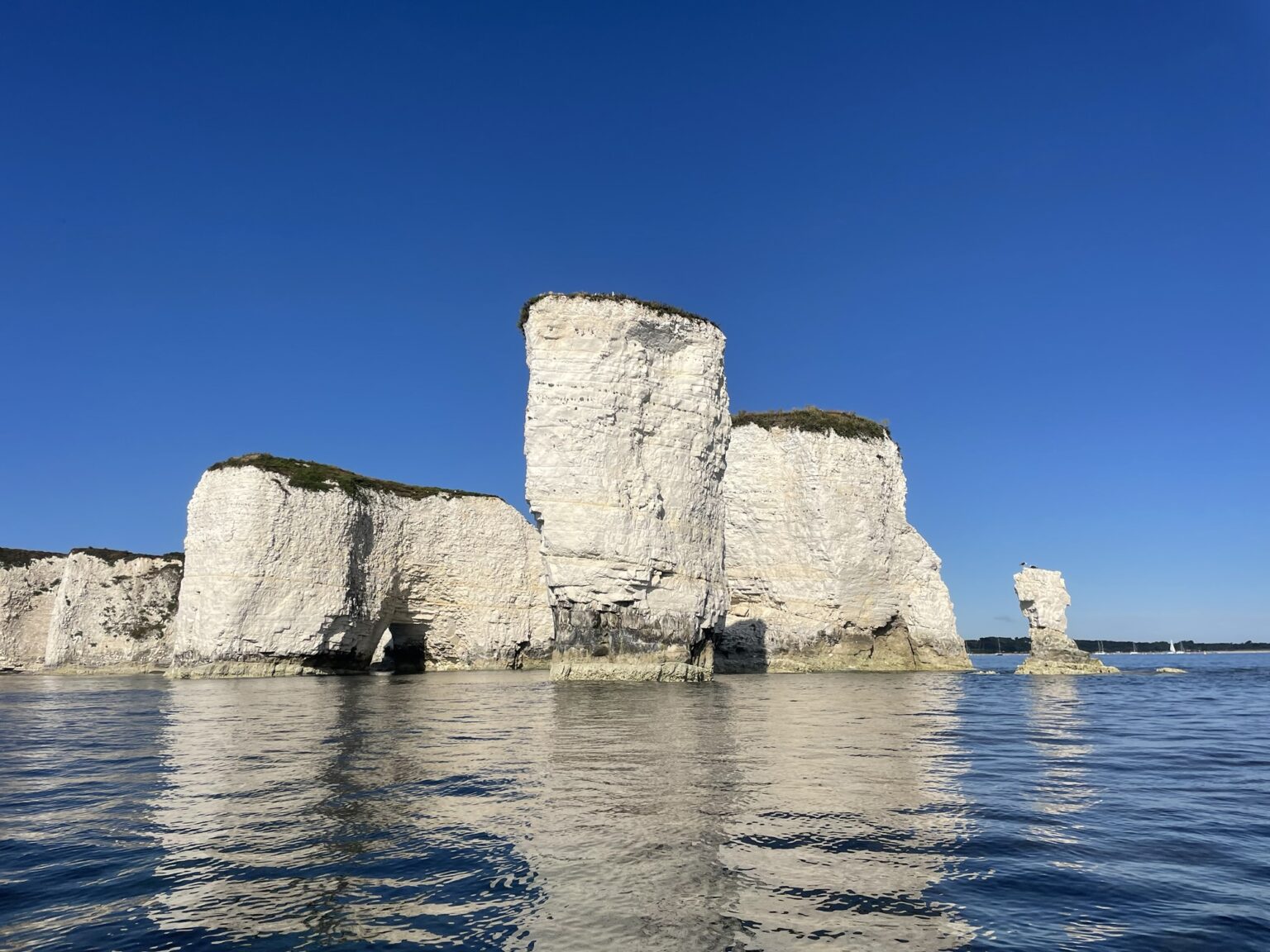
Today we stayed on our buoy in Studland Bay as it is so peaceful and beautiful here.
We are well beyond the metropolitan landmarks of Bournemouth, although we can see the pier and the wheel in our binoculars, and the conglomeration that is Poole Harbour is happily hidden from view.
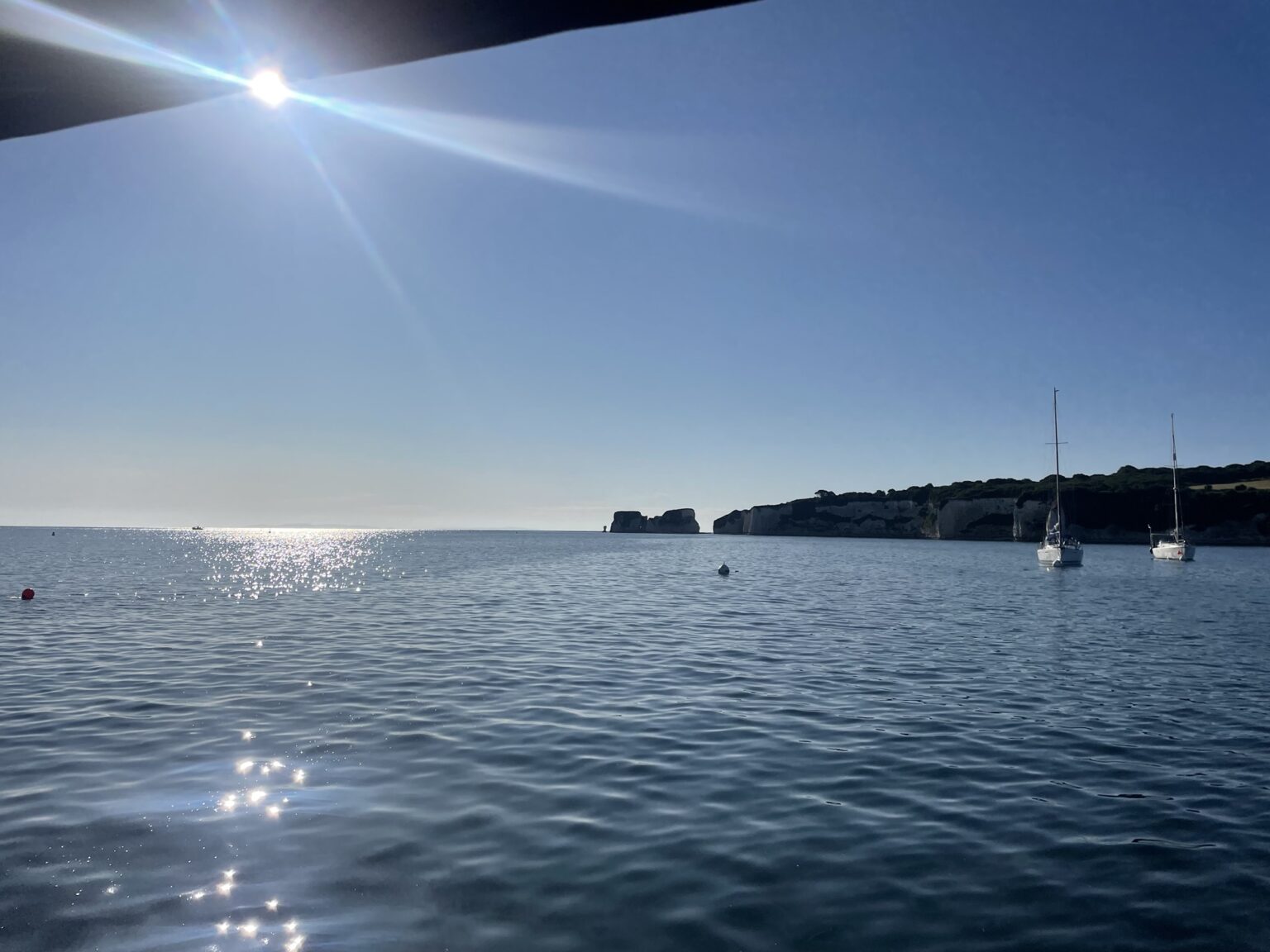
Instead we can focus on the impressive Old Harry Rocks. We blew up Zigzags and off we sped with our silent e-motor, despairing of the horrid loud jet-skis that I will ban when I am World King. Thankfully there were only a couple.
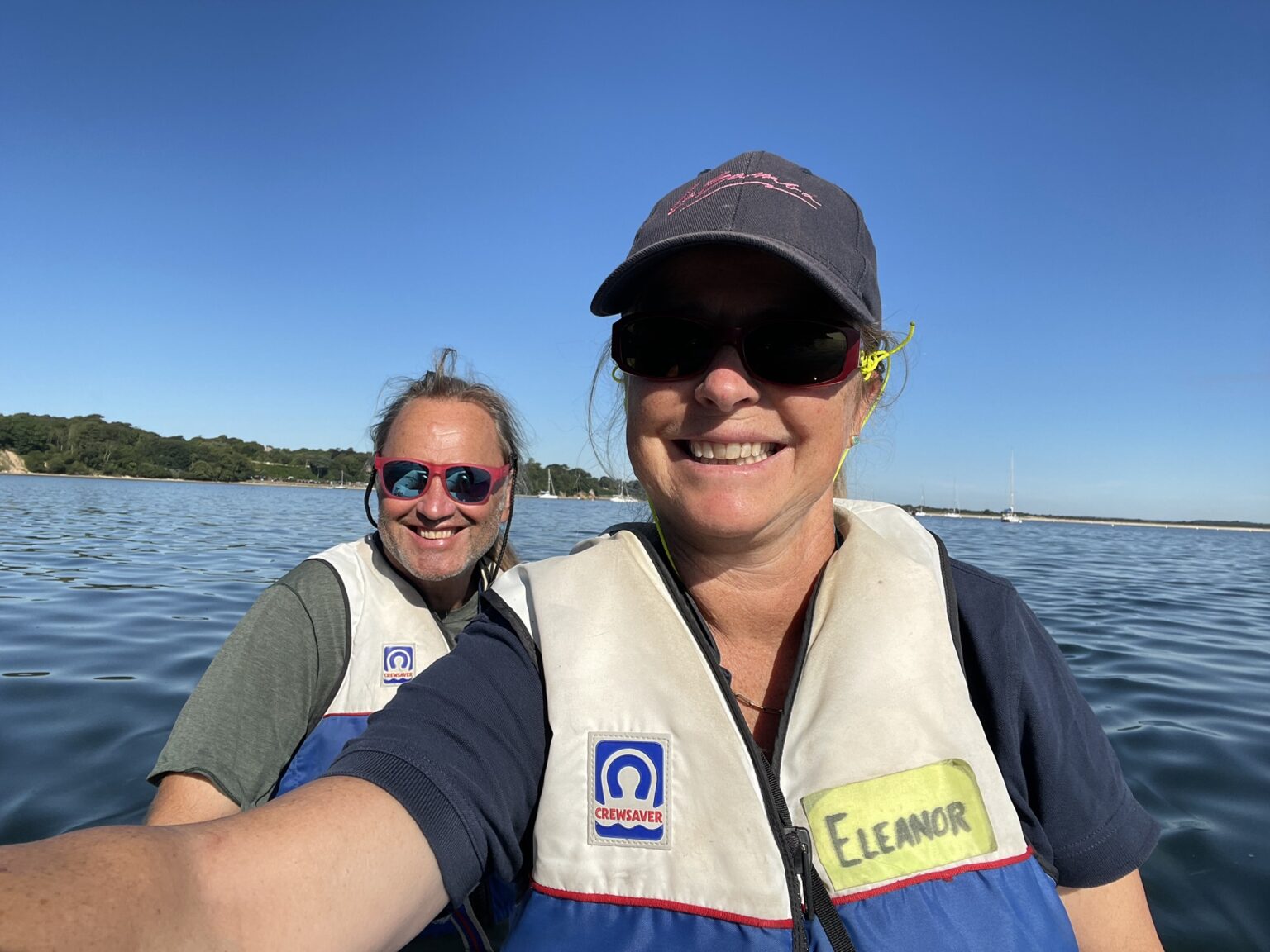

Harry was hiding round the corner and made a spectacular sight.
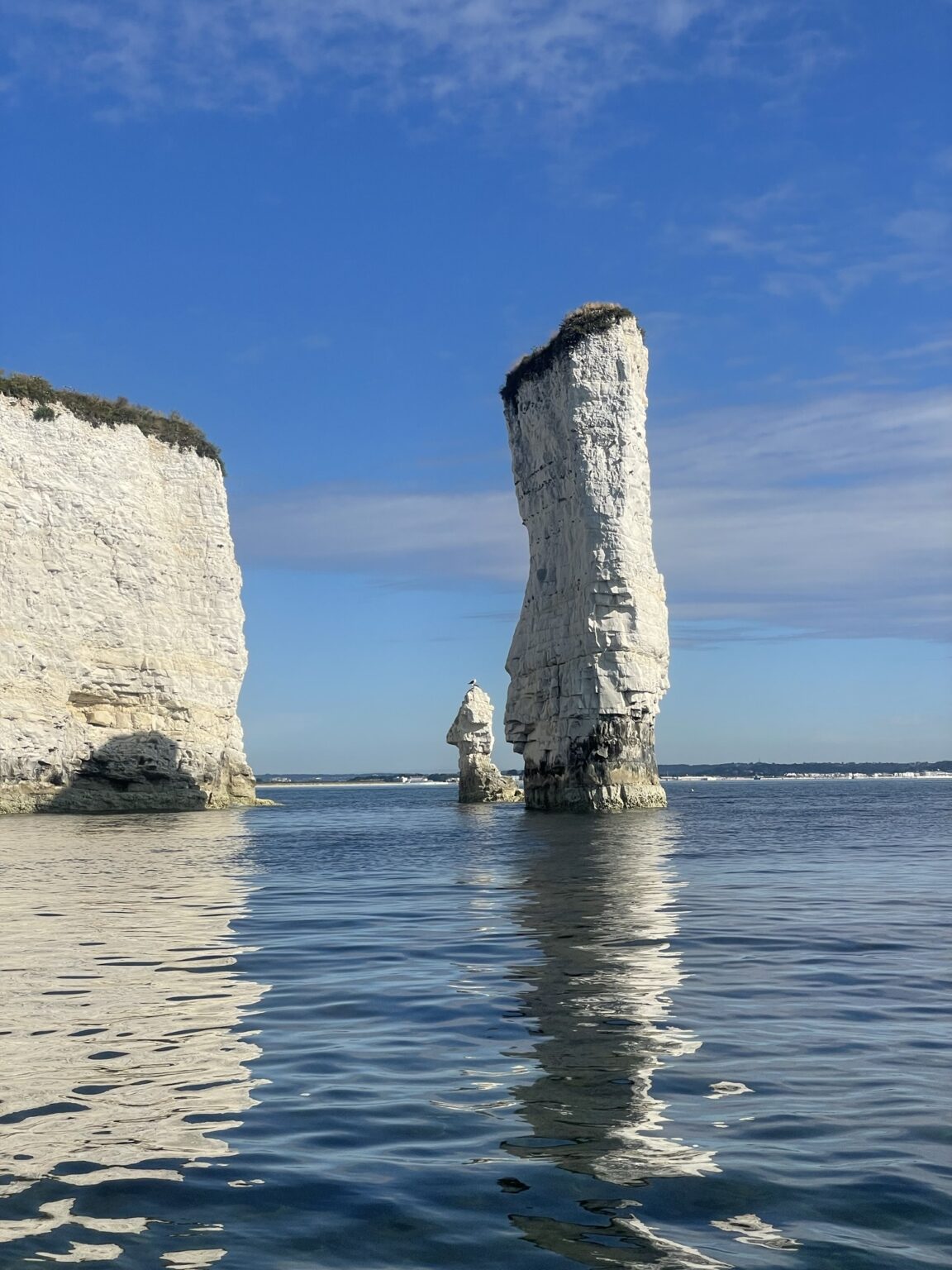
There are various theories as to why Old Harry bears this name. There are 3 theories – so you can choose:
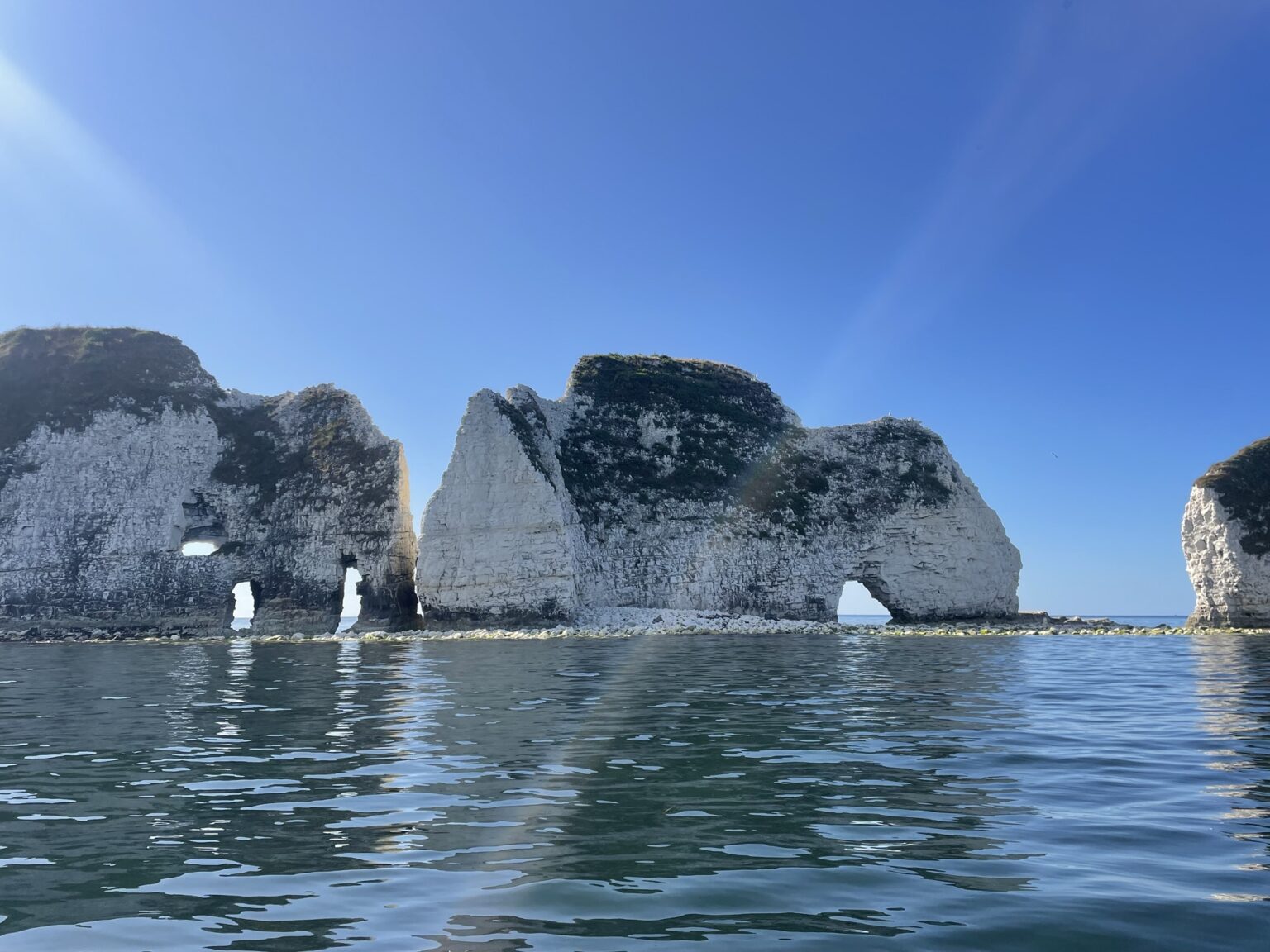
One is that Old Harry, aka the Devil, once took a nap on these rocks one night, so locals should beware and stay clear
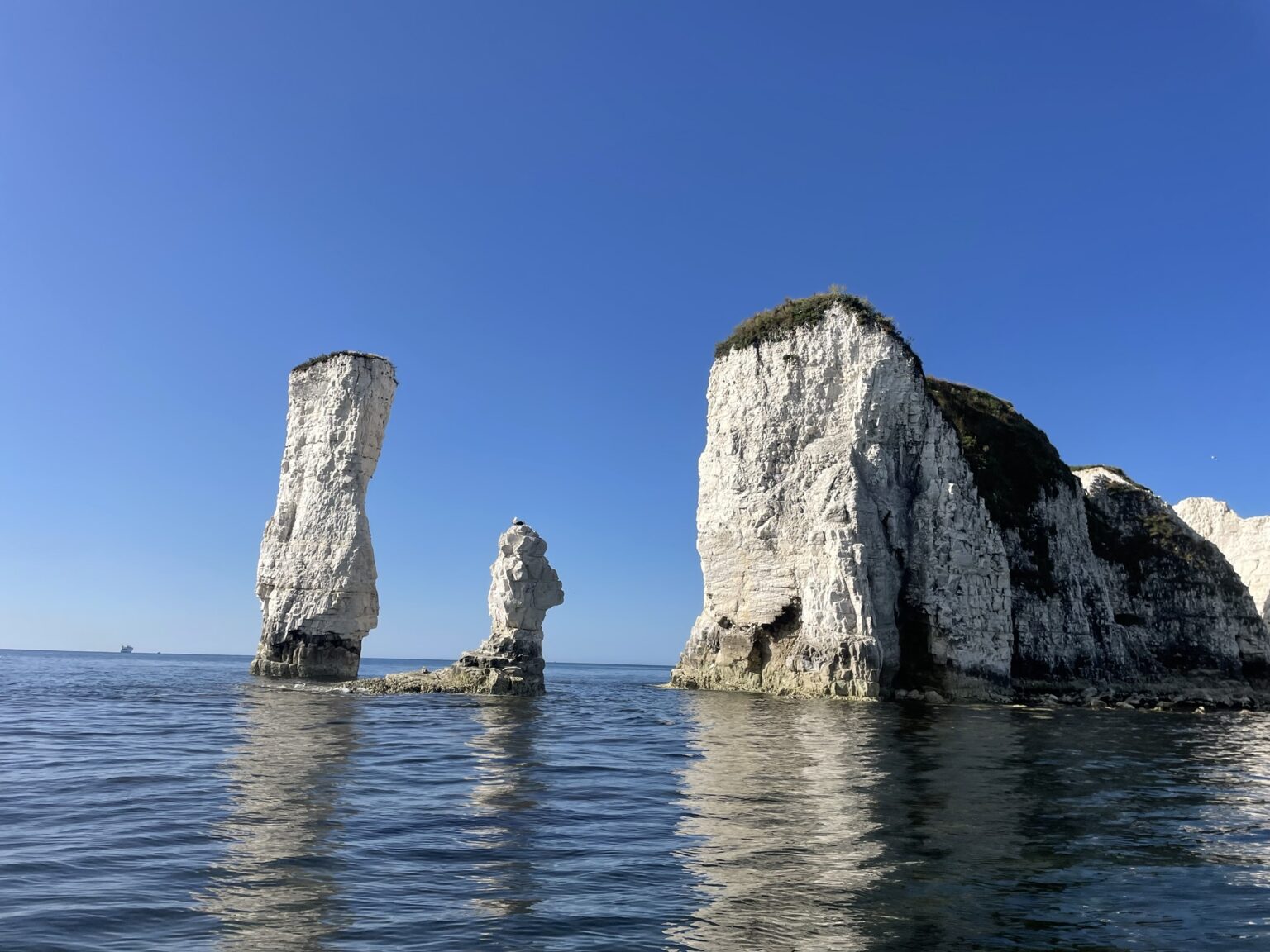
The second is that they are named after Harry Paye, a notorious Poole pirate, who used to hide behind these rocks and attack merchant ships (and/or the French) and hide his loot in the handy caves here.
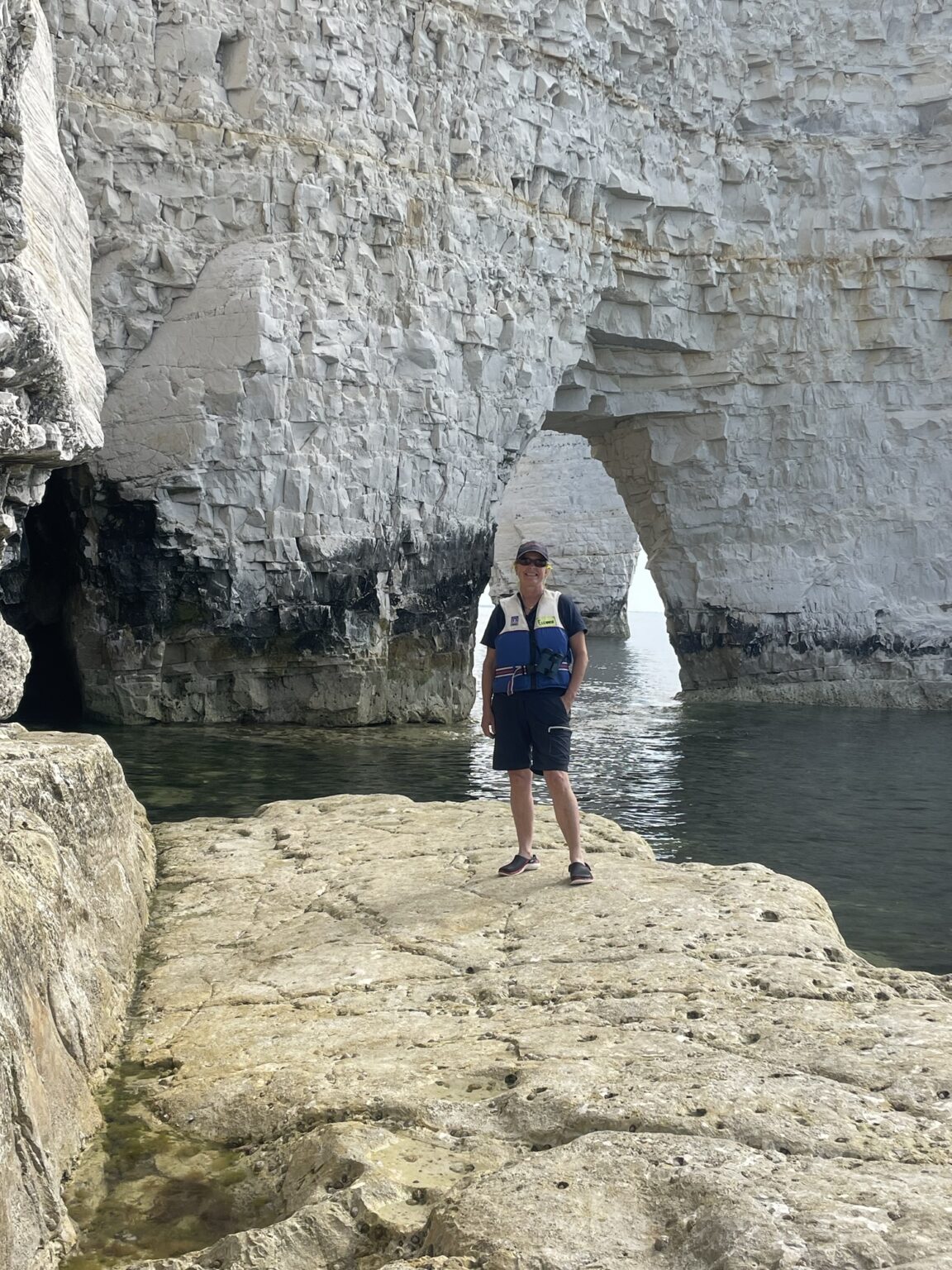
The third option is that a Viking raid led by Earl Harold in the 9th century was thwarted by a violent storm turning poor Harold into a chalk pillar.

Take your pick!
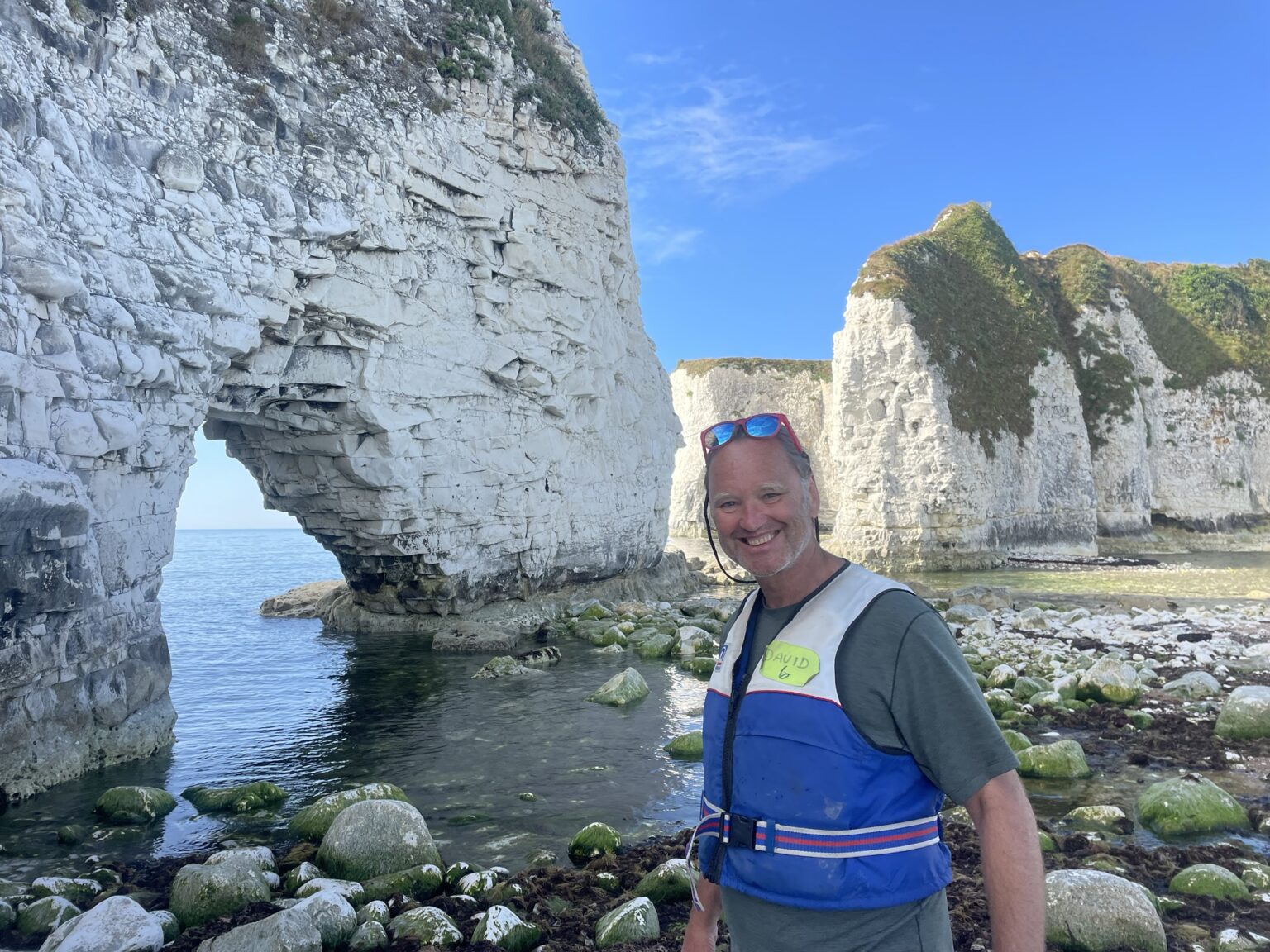
Old Harry Rocks are part of a 66 million year old chalk ridge, that used to go all the way to the Needles, Harry’s distant cousins, and until 10,000 years ago the Isle of Wight was attached to Dorset.
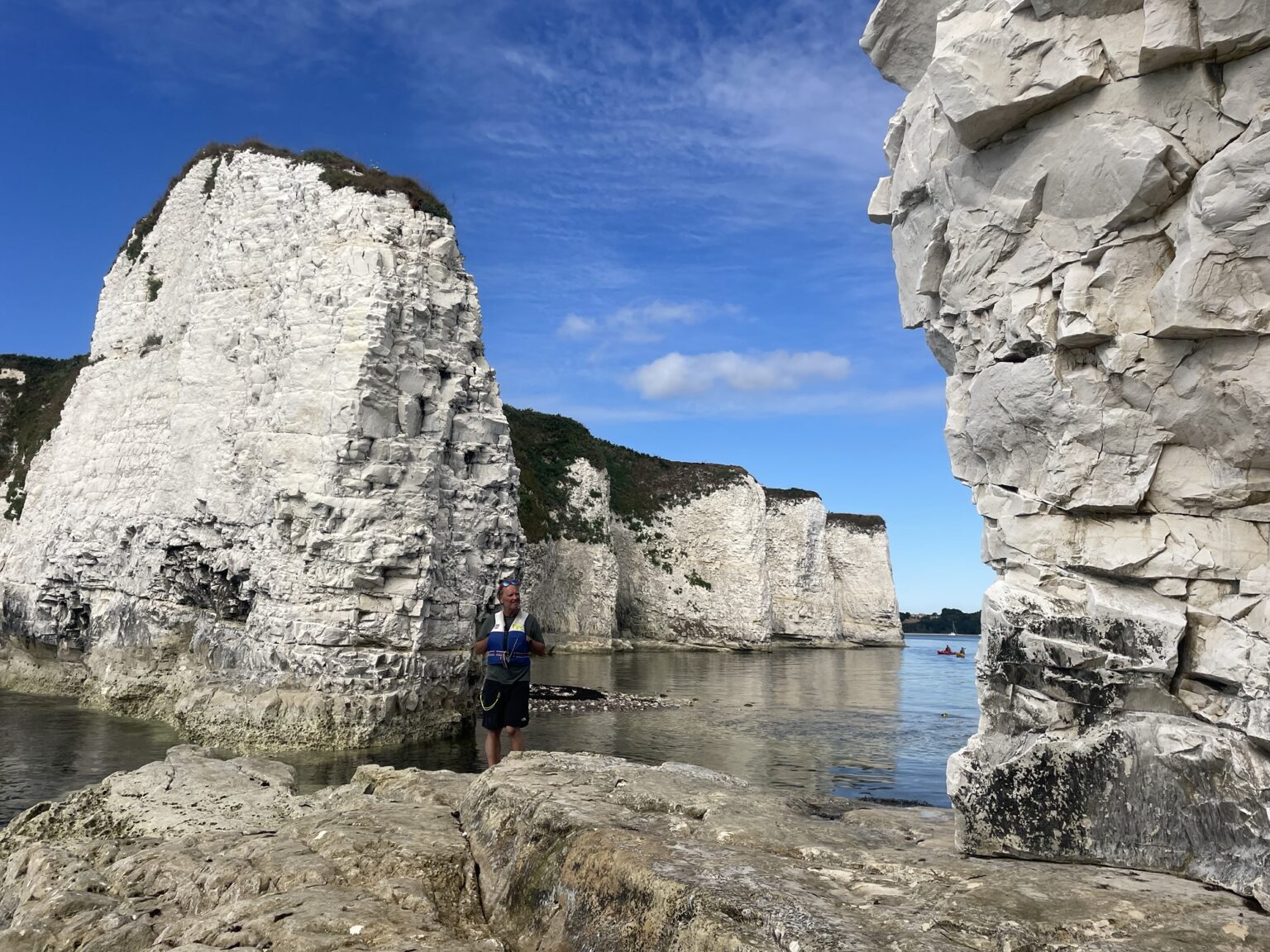

Much crumbled away at the end of the last ice age 10,000 years ago when sea levels rose to form the Solent and leave us with these glorious Jurassic remains.

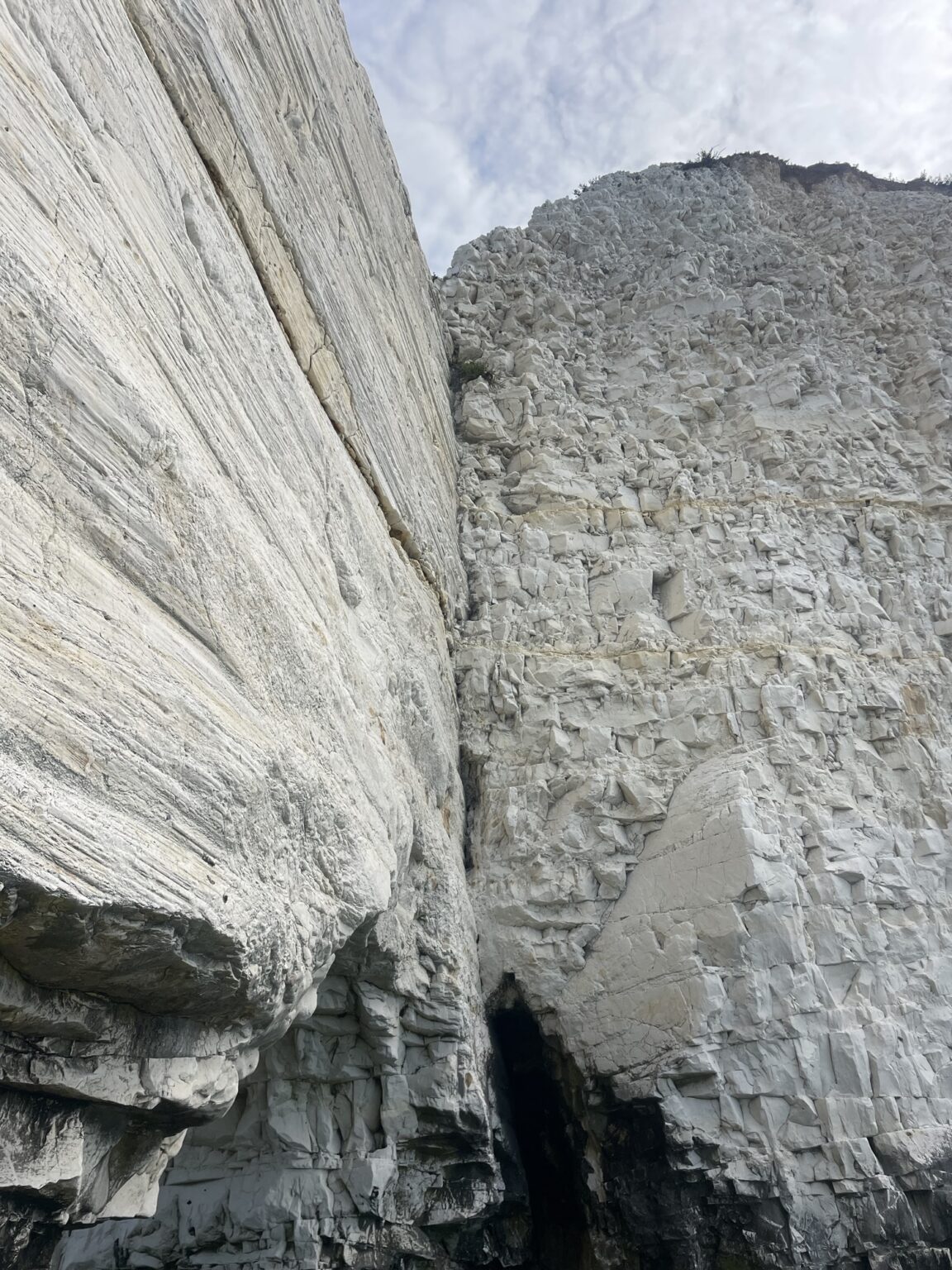
We didn’t see any fossils, just black-backed gulls and cliff martins nesting here.
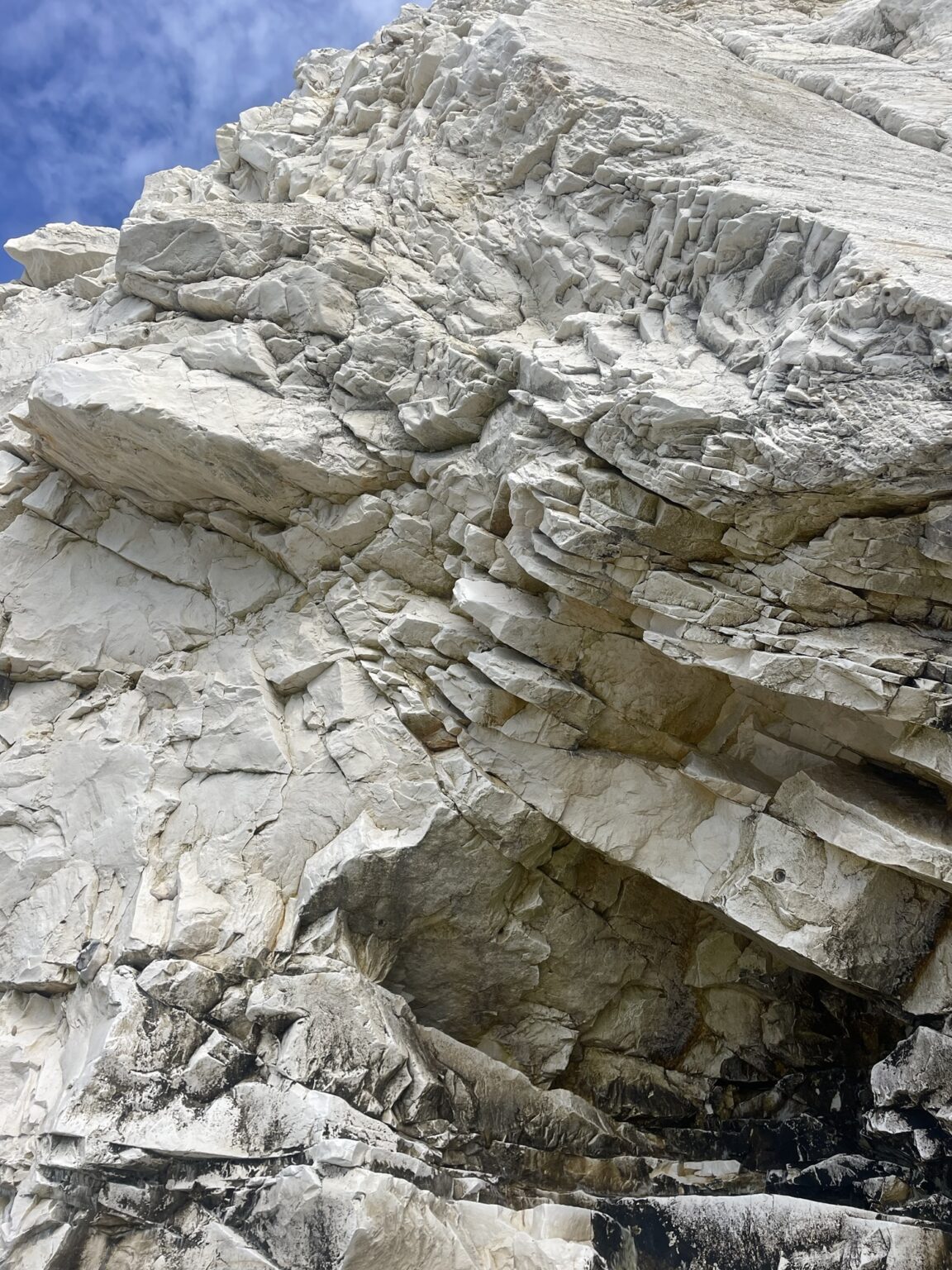
The sea grass has definitely recovered since they changed to eco-moorings: apparently there are 2 types of seahorses living here and Studland Bay was the first UK record of a pregnant male in 2008.
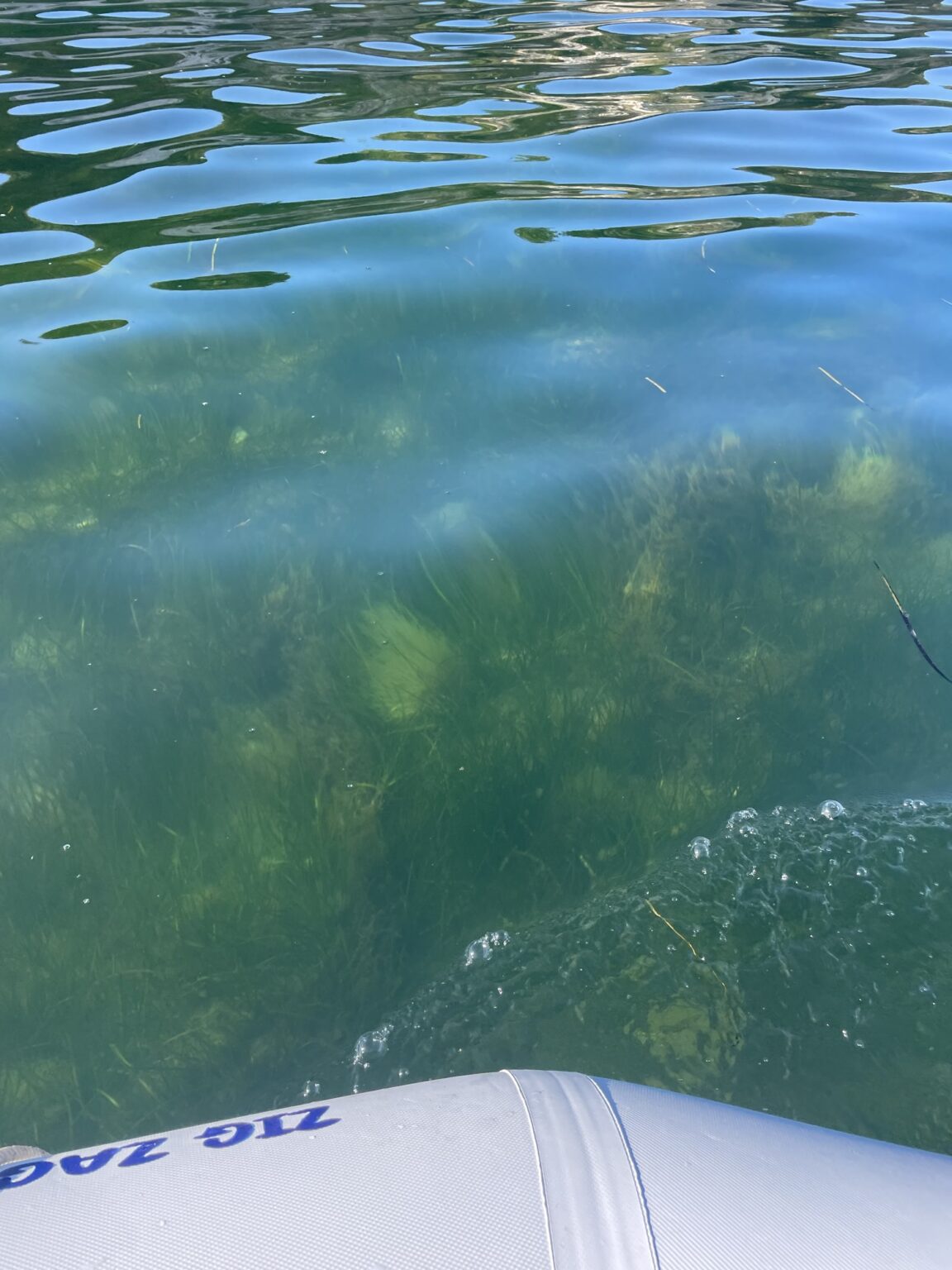
We swam in the not too cold sea and walked along the cliffs after lunch, serenaded by sky larks, to get the full all-around view of the cliffs.

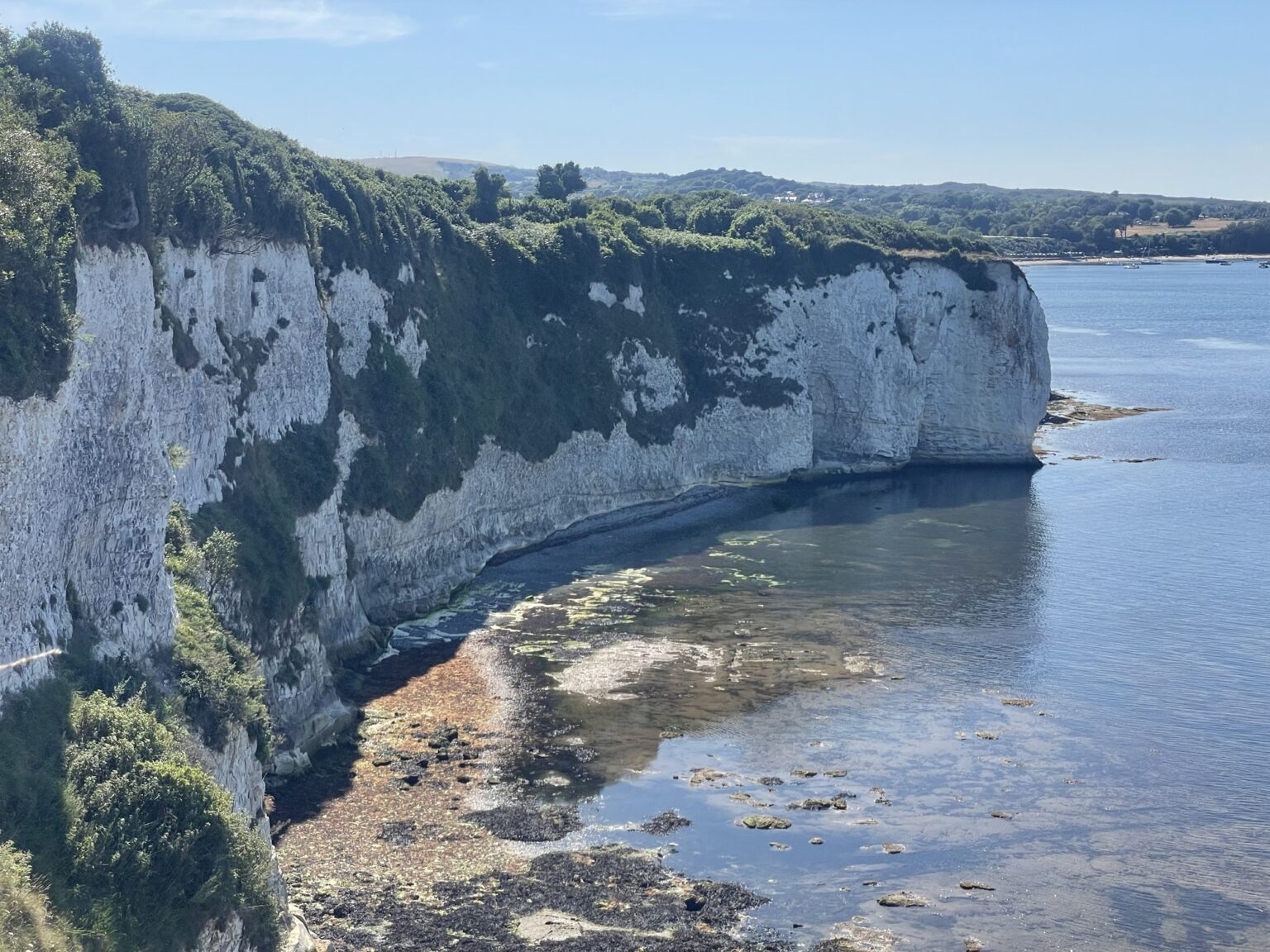
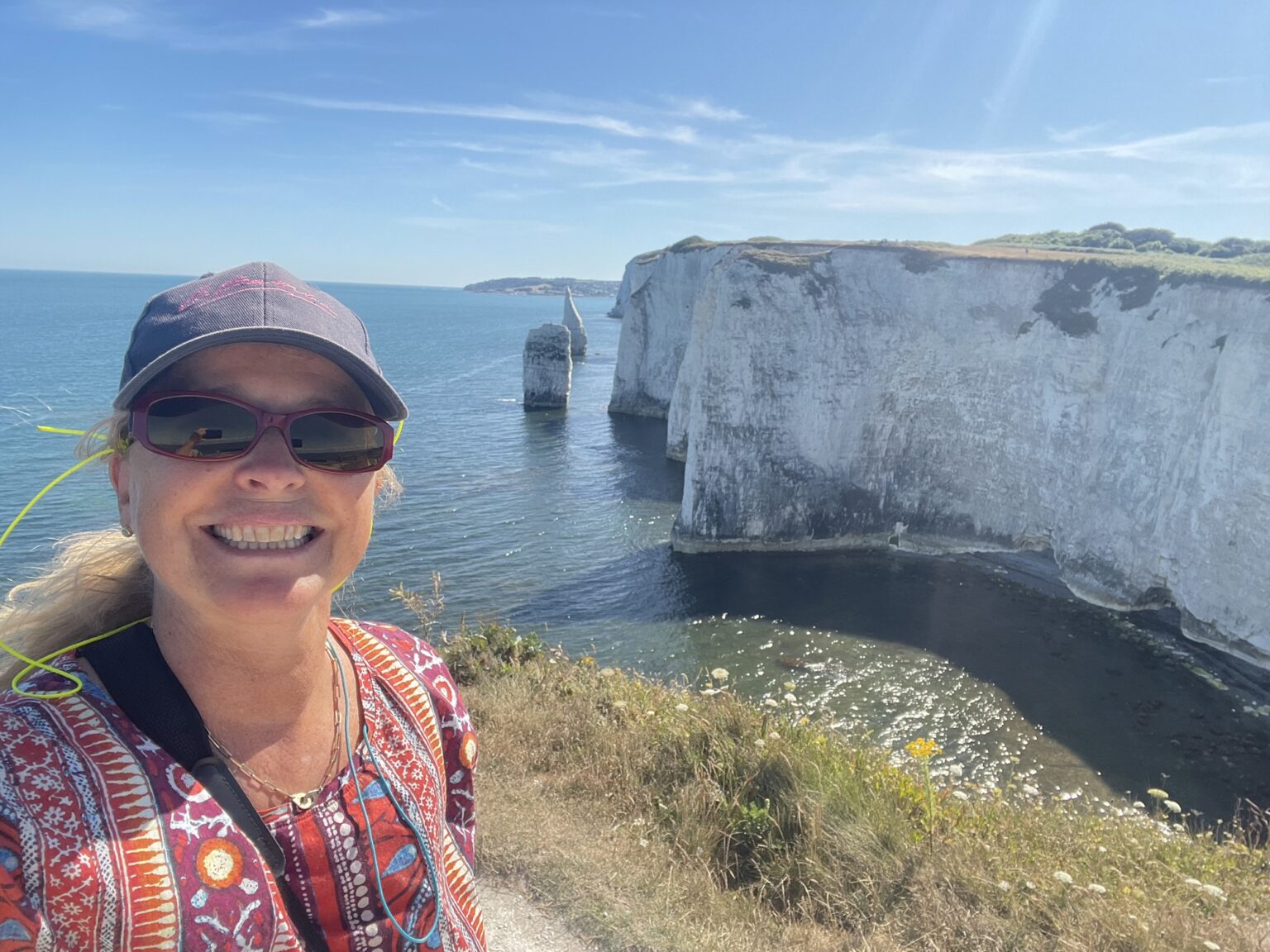
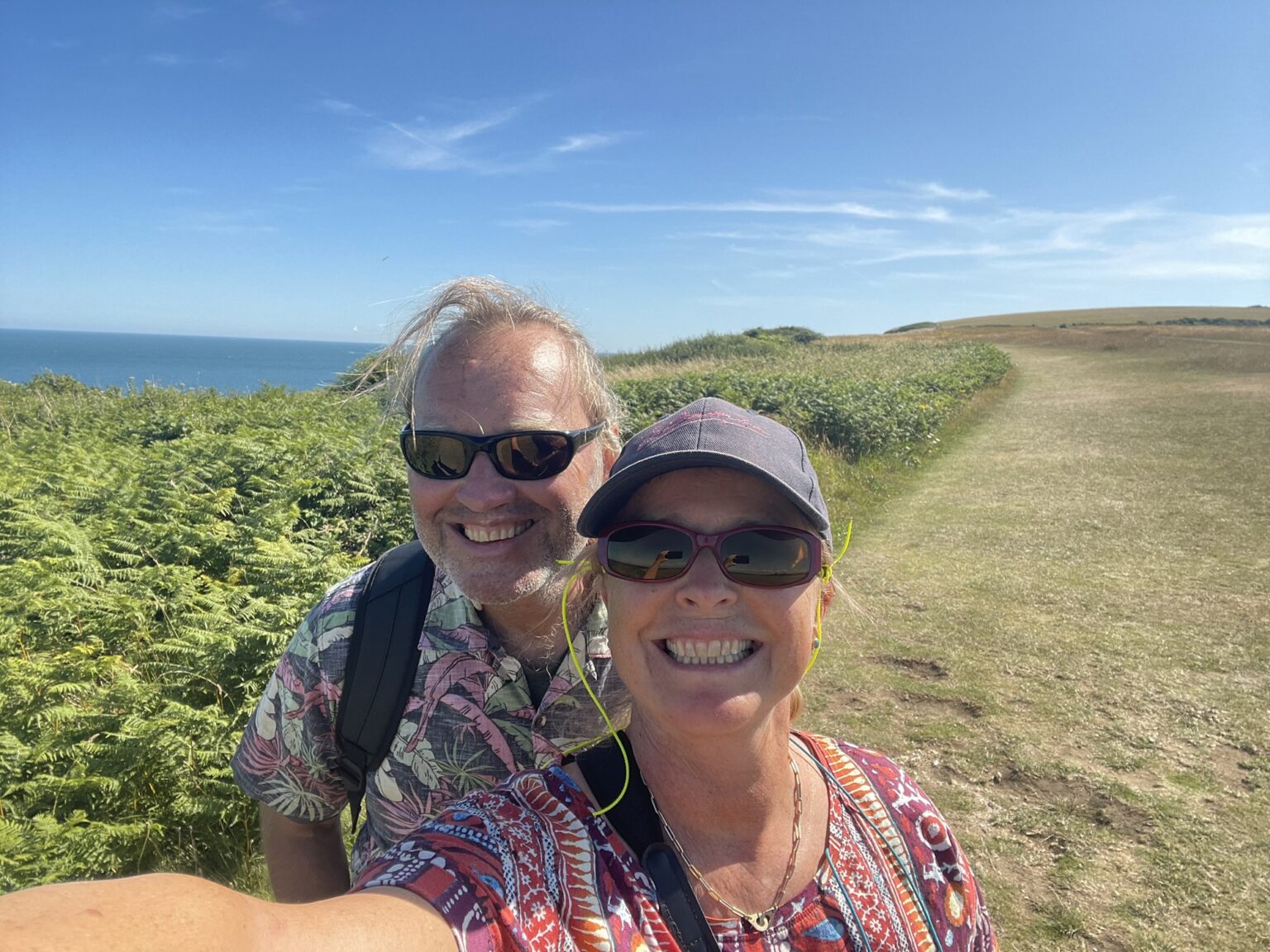
We gazed down into Swanage
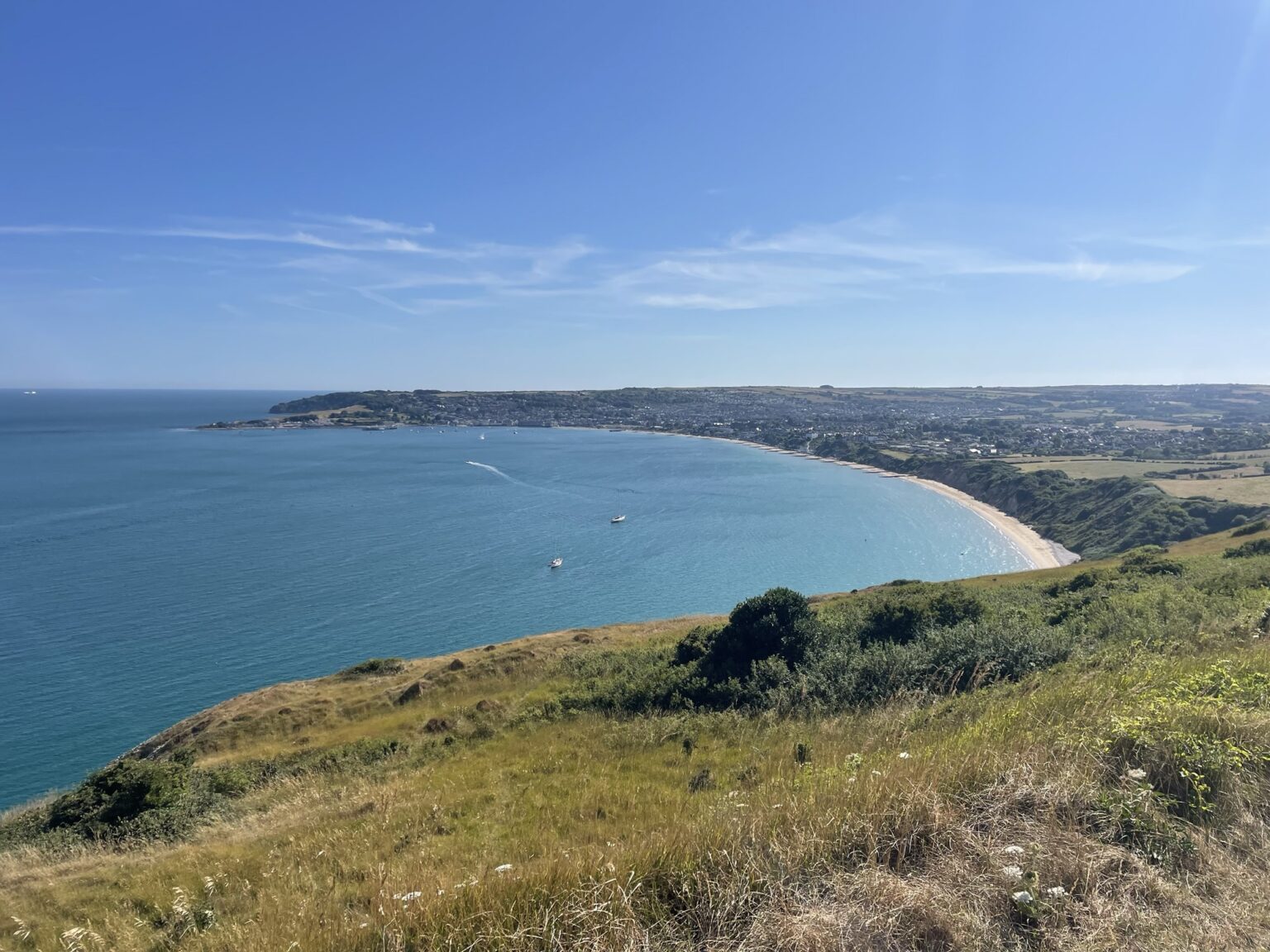
And could see all of Poole Harbour
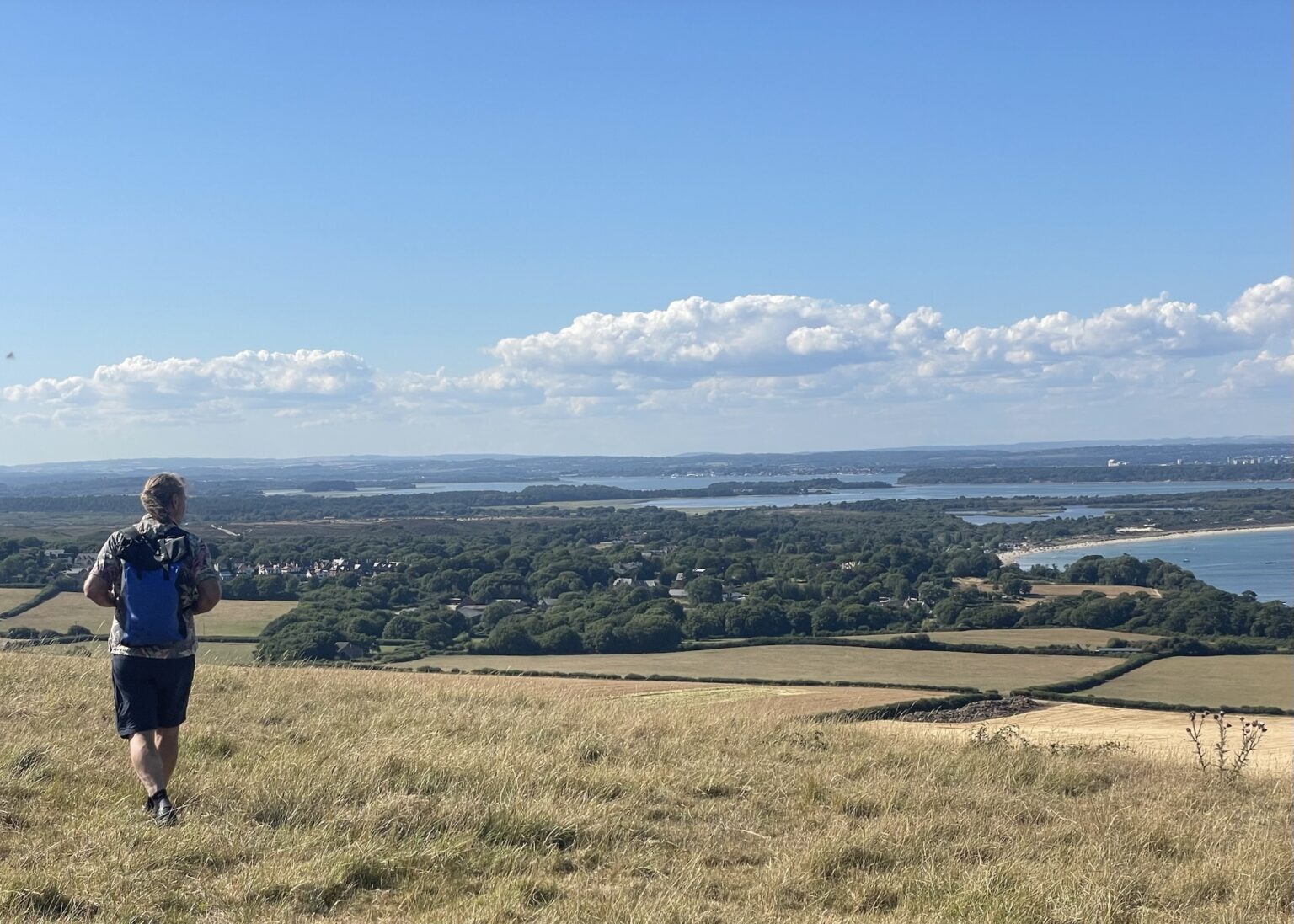
We finished a perfect day with a delicious meal at the Pig on the Beach.
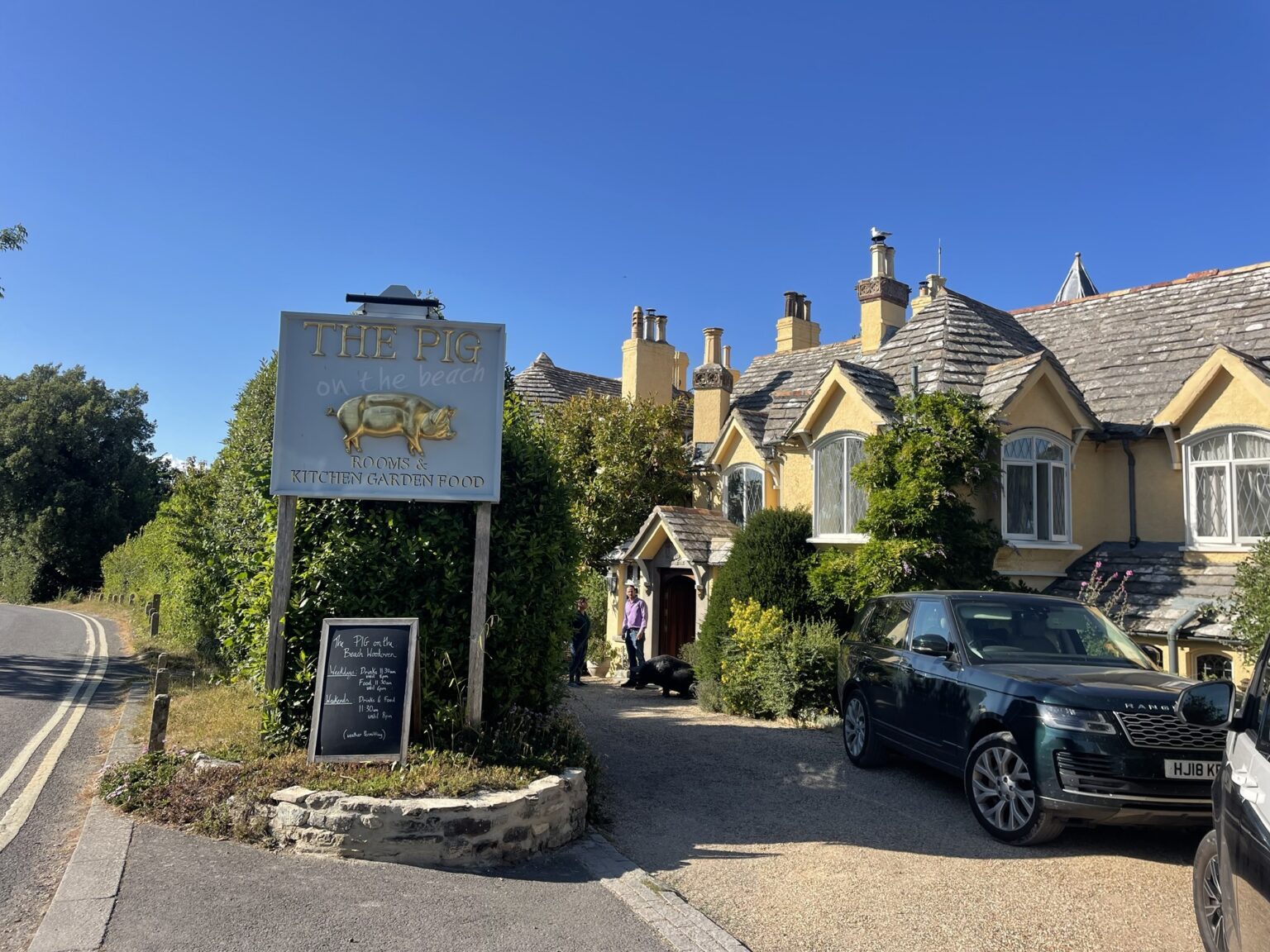
Tomorrow we head for Weymouth

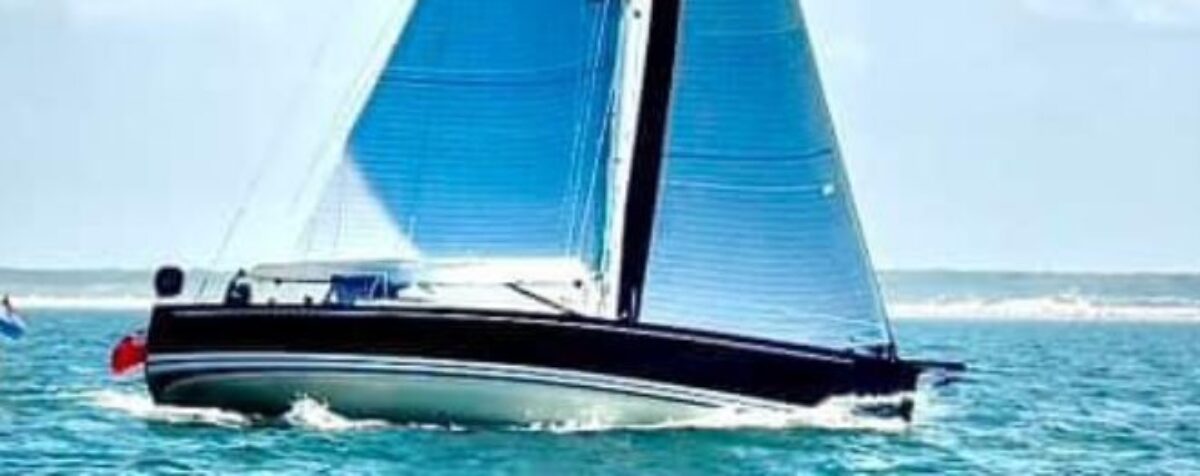
Lovely photos, as usual – particularly of Old Harry and co. !! Thank you for those.. you even brought out the geologist in me (which is very old and sleeping most of the time now) …
I sat up at the word Jurassic.. Old Harry is indeed close to the southern Jurassic coast (not disregarding the Yorkshire one too, of course!) but I couldn’t recall any chalk sediments belonging to the Jurassic period, surely Old Harry is younger I thought.. must be Cretaceous.. so I checked and my old geologist was not wrong!
Wikipedia says they were: ” formed 84–72 million years ago in the Campanian age of the Late Cretaceous. The bands of stone have been gradually eroded over the centuries, some of the earlier stacks having fallen (Old Harry’s original wife fell in 1509), while new ones have been formed by the breaching of narrow isthmuses. Across the water to the east, The Needles on the Isle of Wight are usually visible. These are also part of the same chalk band and only a few thousand years ago were connected to Ballard Down.”
love Jo xx